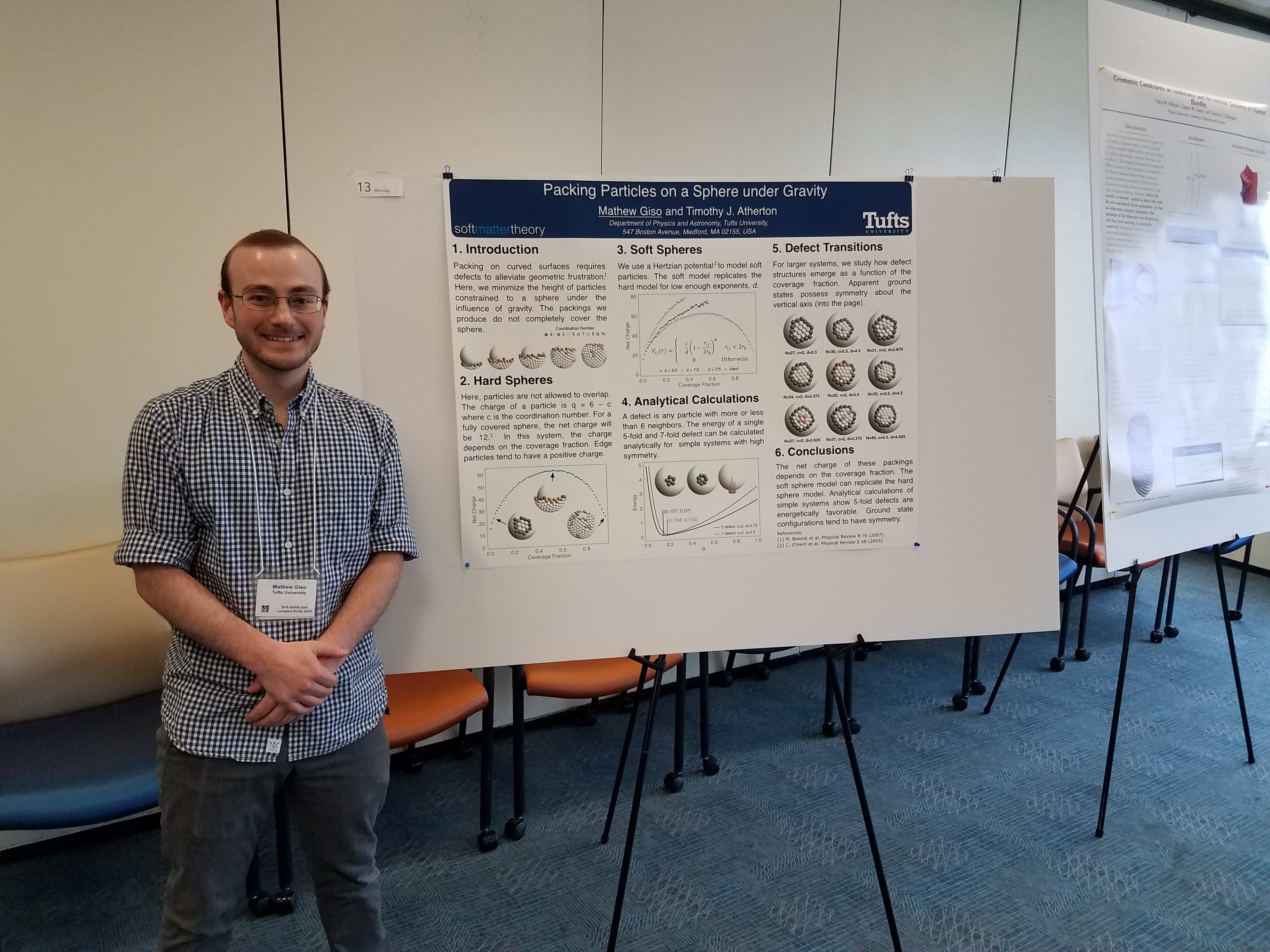UMass Summer School on Soft Solids and Complex Fluids
The methods used in soft matter theory are not found in your standard graduate school courses. This can make it difficult to get your foot in the door when it comes time to start research. Luckily, there are a growing number of programs designed to emphasize topics that are useful to us. In late June, I had the privilege of attending the UMass Summer School on Soft Solids and Complex Fluids (Or SSSSCF for short. They teach us to love long acronyms right off the bat). Young graduate students from all over the country flew and drove in droves to spend a week learning from experts in our field. It was a unique experience that not only exposed us to material we might not see otherwise, but also introduced us to future colleagues.
Four professors gave a series of lectures each day on topics of their choice. Markus Deserno of Carnegie Mellon presented on lipid membranes. He discussed how amphiphilic (surfactant) molecules spontaneously assemble into different configurations depending on their geometry. Leading into a discussion of a geometric Hamiltonian, known as the Helfrich Hamiltonian, that can be used to elegantly describe the behavior of lipid membranes. Eleni Katifore of University of Pennsylvania is an expert on network theory. She discussed how networks evolve in nature, whether that be the phloem and xylem in plant leaves, the vascular structure of mammals or the growth of slime molds (/r/Slimemolds). These systems evolve in ways that make them more effective at their job and robust to disruptions. Leo Radzihovsky of University of Colorado used Landau Theory to examine Goldstone modes in a wide variety of systems. Goldstone modes are low-energy modes associated with points where symmetries in a continuous phase are broken (e.g. a phase transition in a liquid crystal). Last but not least, UMass’s own Tony Dinsmore presented on a behavior in colloids and emulsions. He discussed a wide range of topics including Reynolds number, molecular crowding, and a wide variety of surface interactions.
The program also included poster sessions, hikes, barbecues and more. We were afforded a large amount of free time which gave us an opportunity to get to know the other participants. Overall a really fruitful experience. If you’re a first or second year graduate student I highly recommend attending! Here is the link to their page.


